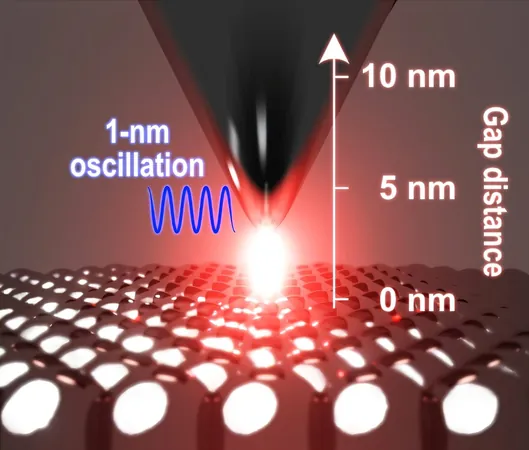
Groundbreaking Microscopy Breaks Barriers with 1-Nanometer Resolution!
2025-07-17
Author: Wei Ling
Unlocking the Atomic World: A Scientific Leap!
The quest to understand the interplay between light and matter on an atomic scale is revolutionizing technology and materials science. Minuscule atomic structures—like the defects in diamonds or the arrangements of molecules in electronic devices—play a pivotal role in determining a material’s optical properties and overall functionality.
A Revolutionary Approach: The ULA-SNOM Technique
A team of researchers from the esteemed Fritz-Haber Institute of the Max-Planck Society in Germany, alongside international partners from Japan and Spain, have unveiled a cutting-edge innovation in microscopy. Their breakthrough, named ultralow tip oscillation amplitude scanning near-field optical microscopy (ULA-SNOM), achieves an astonishing spatial resolution of 1 nanometer, allowing scientists to peer into the atomic realm like never before.
From Traditional to Exceptional: The Power of ULA-SNOM
Traditional scattering-type scanning near-field optical microscopy (s-SNOM) often falls short, offering resolutions between 10 to 100 nanometers. This isn’t enough for the intricate details that atomic-scale imaging demands. The researchers ingeniously combined s-SNOM with noncontact atomic force microscopy (nc-AFM) using a silver tip under visible laser light. This fusion creates a plasmonic cavity—a specialized light field that concentrates light into an incredibly small space—thereby achieving unparalleled optical contrast on the angstrom scale.
Transforming Science: Implications for the Future
This breakthrough doesn’t just push the limits of imaging; it opens doors to potential advancements in material design for electronics and medical devices. With the power to visualize atomic defects and nanoscale structures at such precision, a new frontier in optical engineering and materials science is on the horizon.
Published and Proud: A New Era of Discovery
This groundbreaking research has been highlighted in the prestigious journal *Science Advances*, marking a significant milestone in the field. As scientists harness the capabilities of ULA-SNOM, the future of materials science and technology could be brighter—and more precise—than ever before!




 Brasil (PT)
Brasil (PT)
 Canada (EN)
Canada (EN)
 Chile (ES)
Chile (ES)
 Česko (CS)
Česko (CS)
 대한민국 (KO)
대한민국 (KO)
 España (ES)
España (ES)
 France (FR)
France (FR)
 Hong Kong (EN)
Hong Kong (EN)
 Italia (IT)
Italia (IT)
 日本 (JA)
日本 (JA)
 Magyarország (HU)
Magyarország (HU)
 Norge (NO)
Norge (NO)
 Polska (PL)
Polska (PL)
 Schweiz (DE)
Schweiz (DE)
 Singapore (EN)
Singapore (EN)
 Sverige (SV)
Sverige (SV)
 Suomi (FI)
Suomi (FI)
 Türkiye (TR)
Türkiye (TR)
 الإمارات العربية المتحدة (AR)
الإمارات العربية المتحدة (AR)